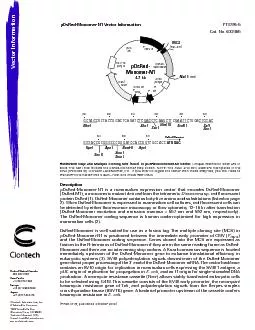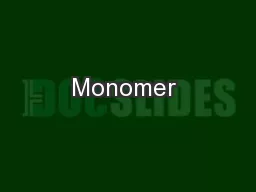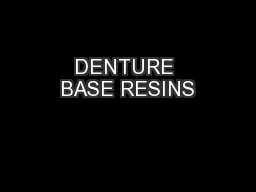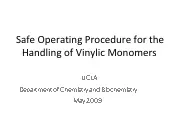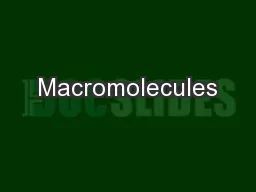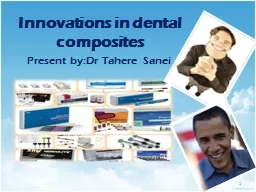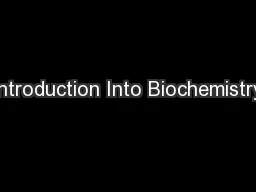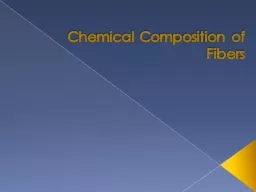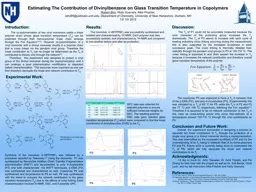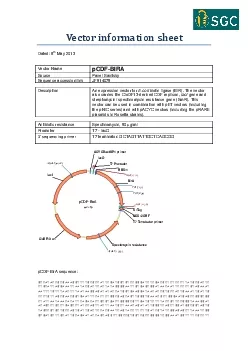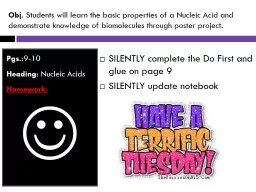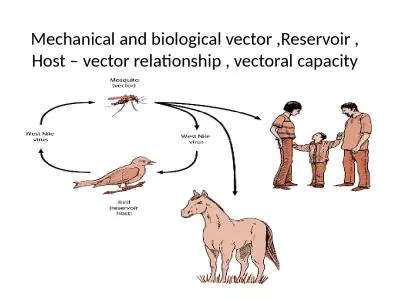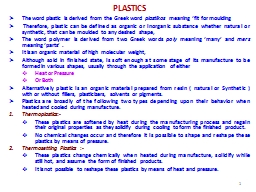PDF-pDsRed-Monomer-N1 Vector Information
Author : celsa-spraggs | Published Date : 2015-09-08
Restriction Map and Multiple Cloning Site MCS of pDsRedMonomerN1 Vector Unique restriction sites are in bold The I site follows the DsRedMonomer stop codon NOTE
Presentation Embed Code
Download Presentation
Download Presentation The PPT/PDF document "pDsRed-Monomer-N1 Vector Information" is the property of its rightful owner. Permission is granted to download and print the materials on this website for personal, non-commercial use only, and to display it on your personal computer provided you do not modify the materials and that you retain all copyright notices contained in the materials. By downloading content from our website, you accept the terms of this agreement.
pDsRed-Monomer-N1 Vector Information: Transcript
Restriction Map and Multiple Cloning Site MCS of pDsRedMonomerN1 Vector Unique restriction sites are in bold The I site follows the DsRedMonomer stop codon NOTE The I and I sites are methy. Restriction Map and Multiple Cloning Site (MCS) of pDsRed-Monomer. All sites shown are unique. NOTE: The I I sites are methylated in the DNA provided by Clontech Laboratories, Inc. If you wish to d PHOTOCOPYP CCHC6H HC6H5HCC6H5CHHPolystyrenen HHCH3CHHCCH3nPolypropene HClH Vinyl chloride HHClCHCClnPolyvinyl chloride(pvc) Vinyl acetate HOHCOCH3 Monomer Dr. lakshya kumar. Asstt. Professor. Deptt of Prosthodontics. Lecture-9 am to 10 am. 20/9/2014. PART 2, 3. Conventional heat cure acrylic resins. Conventional cold cure acrylic resins. High impact resistant acrylic resin. UCLA. Department of Chemistry and Biochemistry. May 2009. Types of Vinylic Monomers Utilized in Radical Polymerizations. Acrylamides. Methacrylamides. Acrylates. Methacrylates. Vinyl Acetates. Styrene. Introduction. Macro = big. Made of carbon molecules. Monomer = small molecule (one part) . Can make polymers. Polymers = many parts . Macromolecule. m. onomer-monomer-monomer-monomer. Carbohydrates. Carbon, Hydrogen, Oxygen in ratio of 1:2:1. Present. . by:Dr. Tahere . Sanei. 1. Composite !!! . What does it me. an? . Materials made up of 2 /+ distinct, chemically different phases . The resulted material (composite) combine the properties of the phases included. 1. What is Biochemistry?. Biochemistry = chemistry of life. . Biochemists use physical and chemical principles to explain biology at the molecular level.. Basic principles of biochemistry are common to all living organism. Chemical Composition of Fibers. Fibers are polymers:. long chains made of simple molecules. Natural Fibers. Wool. Polymer= Polypeptide chains (forming the protein keratin). Monomer= amino acids (one of which is cysteine . . .cysteine contains . g. dramatically. The T. g. of P3 seems to increase with each cycle of heating indicating cross linking occurring during the measurement; this is also supported by the increased broadness in each successive . Dated 8thMay 2013Vector NamepCDF-BIRASourcePavel SavitskySequence accession/linkJF914075DescriptionAnexpression vector for Ecolibiotin ligase BIRThe vector also carries the CloDF13-derived CDF replico Pgs.:. 9-10. Heading: . Nucleic Acids. Homework:. . SILENTLY complete the Do First and glue on page 9. SILENTLY update notebook. Do First. DO FIRST (PG 9). Which biomolecule…. Makes up hair, nails, and feathers? c. Provides cells with cushioning. pUC18 Product Information Sheet # V330 02 MoBiTec GmbH, Germany Phone: +49 551 70722 0 Fax: +49 551 70722 22 E - Mail: info@mobitec.com www.mobitec.com Revised January 2014 1 Product p UC18 high c Mechanical and biological vectors. A vector is an animal that carries a disease from host to host .. . Mechanical vectors. An animals that carries a pathogen from host to host without being infected itself is a mechanical vector .. plastikos. . meaning ‘fit for . moulding. Therefore, plastic can be defined as organic or inorganic substance whether natural or synthetic, that can be . moulded. to any desired shape, . The word polymer is derived from two Greek words .
Download Rules Of Document
"pDsRed-Monomer-N1 Vector Information"The content belongs to its owner. You may download and print it for personal use, without modification, and keep all copyright notices. By downloading, you agree to these terms.
Related Documents

